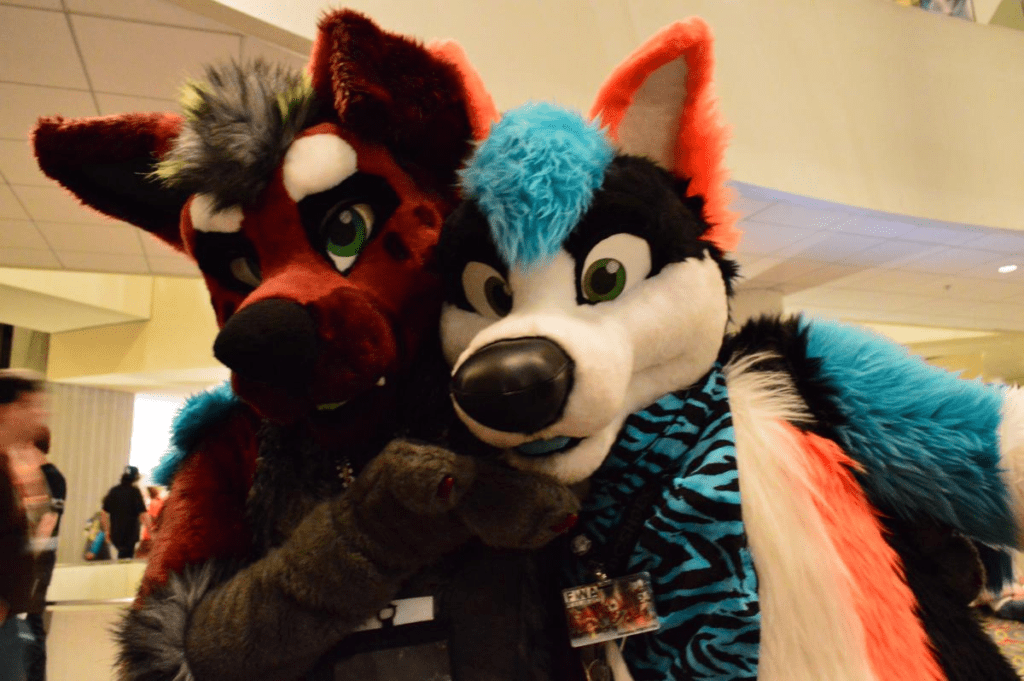The Furry Community Is Struggling To Expel Extremists
The Furry Community | Michael Edward Herman, 35, of West Virginia, was charged on June 26 with making “terroristic threats” on Twitter. The tweets in question contained “intimidating language” about the passage and enforcement of abortion bans, according to a press release issued by the state of West Virginia’s Department of Homeland Security. The tweets were directed at Governor Jim Justice, Attorney General Patrick Morrisey, and Vice President Kamala Harris. Despite the fact that the tweets in question have not been made public, the timing suggests that he sent them as state officials attempted to enact an abortion ban. His death date and the content of his social media posts indicate that he was a fervent supporter of reproductive freedom. (At the moment, neither he nor his public defender has commented on the charges leveled against him.)
However, not long after Herman’s arrest, members of the furry community revealed that he was a furry named Cani Lupine who had been a disturbing, far-right voice in the community for years. This was finished shortly after his capture. Dogpatch Press, a furry Community news website, published a large number of tweets from Lupine, a user known for tweeting some pretty hateful things, the majority of which were transphobic statements and messages with general MAGA overtones. Because of the lack of information about the tweets that led to his arrest, the community began to focus on his past and the far-right commentary he had made. Furthermore, they expressed concern that he was not an outlier in the prevalence of his views.

At first glance, a group of extremists may not fare well in the furry community. It has a large population of neurodiverse children and adults, and it is often defined by a deep love of feature-length animated films like Zootopia and The Bad Guys, as well as a general openness to people of all sexual orientations and gender identities. Participants create “fursonas,” or anthropomorphized animal characters, complete with their own backstories, names, and quirks. These “fursonas” can be created in a variety of ways, including on paper, online, or in elaborate, often costly, costume form for one of the many conventions that take place each year. Conventions are held in a variety of cities throughout the United States. Despite its negative reputation, the furry Community subculture offers many people a safe place to interact with others while remaining anonymous behind their fursonas.
On this week’s episode of Don’t Let This Flop, Rolling Stone’s podcast about internet culture, we talk about the small but vocal group of furries who post anti-trans, anti-LGBTQ+, and often racist content on message boards and social media sites. This topic will be covered in this week’s episode of Don’t Let This Flop. ‘In general, furries are not about that sort of fringe far-right,’ says Kameron Dunn, a PhD student at the University of Texas who studies online subcultures and is a furry fan. This is one of the reasons why furries put on such a show: “Furries are very public, especially when they’re doing something controversial.”

Everything began in April 2017 when the Furry Raiders decided to attend Rocky Mountain Fur Con. Some people compared the Furry Raiders’ red armbands with black paw prints to Nazi uniforms. Despite claims that they are not Nazis (“We have a strong stance about maintaining equal rights and personal creativity within the fandom,” one of the group’s members told Rolling Stone at the time), the Denver Police Department investigated reports of violence at the convention and found the threats credible. The event was called off after the venue demanded an additional $22,000 in security costs.
After being temporarily stymied by the pandemic, in-person events are making a strong comeback. A convention called “Free Fur All” was held about two weeks ago in Tulsa, Oklahoma. Members of the larger community have pointed to speakers and performers, such as an “anti-communist, anti-woke” comedian, as well as members with ties to the far right, to demonstrate that this gathering was aimed at furries with far-right views. The parent organization of the convention claims on its website that it “supports no political or religious causes,” but this remains the case. According to Dunn, the release of “Free for All” was the single most important event in raising the profile of right-wing extremists. Patch O’Furr, the founder of Dogpatch Press, has observed that the number of furries who attend Free Fur All is statistically insignificant. He calls it the “orphan of the entire scene.” “It’s becoming popular in the scene.” This success will not be attributed to the furry Community subculture.
Get the latest updates from the world of Music, Movies, TV, Culture and Fashion on Musical States Magazine. Please Follow Us On Facebook, Instagram, Twitter, And Linkedin To Receive Instantaneous Updates.



